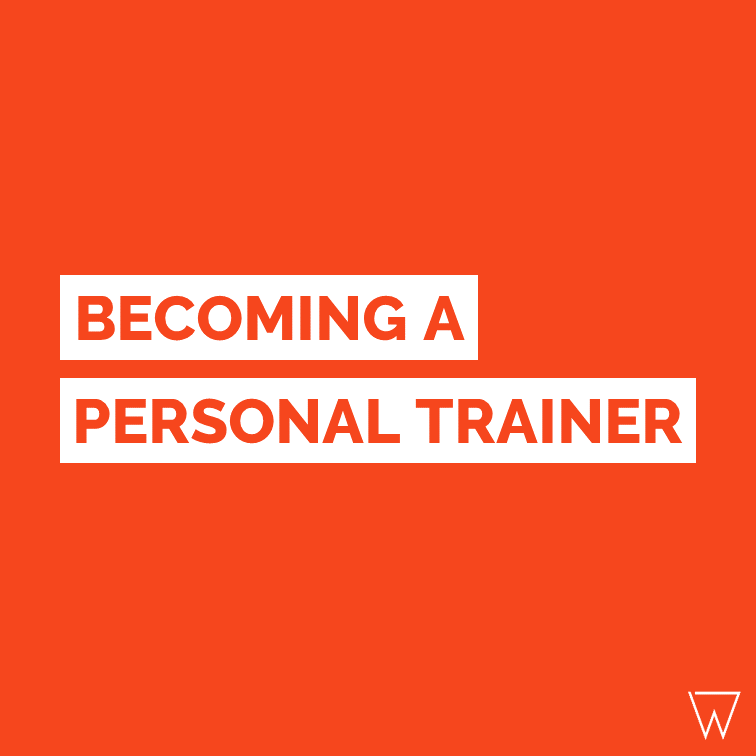Wondering how to become a personal trainer? Whether you’re fresh out of college or considering a career change, many people are tempted by working in fitness. The freedom to choose your own hours, work in an industry you’re passionate about, and help others in the process, are all appealing aspects.
In this article – we walk you through the exact steps to becoming a personal trainer (PT) and embarking on your dream career…
- Is a PT career right for you?
- Getting qualified
- First aid certification & insurance
- Landing your first job
- Getting PT clients
This guide explores each of these stages, from deciding whether it’s right for you to getting your first clients. It covers certifications, the best training providers globally, and how to land a job. Let’s dive straight in…
#1 – Is a PT Career Right For You?
Personal training can be a hugely enjoyable and rewarding career. Doing something that you’re passionate about, whilst helping others, leads to amazing work satisfaction. But there are also times when it might get frustrating, such as when clients don’t follow your advice or skip sessions.
To help decide whether a career in personal training is right for you, ask yourself the following questions…
- Do I like interacting with people? Some introverts can find being around people constantly a bit exhausting. This doesn’t necessarily exclude you from a PT career, but you might need to adjust for it by planning in breaks or training people online.
- Do I walk the talk? If you’re not fit and healthy, clients are unlikely to believe that you can help them. This doesn’t mean you need to be super-ripped though, ‘healthy’ looks different on everyone. But if you’re someone who struggles with gym motivation and healthy eating, then consider training yourself before moving on to help others.
- Am I happy to work early mornings and evenings? You’ll need to fit around clients’ schedules, which often means training them before or after typical office hours.
- Do I want to be employed or freelance? As a PT you can be either, so it’s a personal choice. Do you prefer the freedom of being self-employed or the financial security of a guaranteed base salary?
- What are my salary expectations? Our fitness trainer salary guide provides detailed information on what you can expect to earn in different locations and roles. But as a rough guide, the average PT in the USA earns $33 per hour.
If you’re still unsure whether the career is right for you, then speak to other fitness trainers about their experience and daily routine. If you don’t know any, then ask around your circles, or post an open question to Facebook or Twitter. You might even be able to shadow them for a day and experience it for yourself.
Fitness Business Templates
#2 – Get Certified as a Personal Trainer
Once you decide to become a PT, the next step is to get certified. This is where you really learn your craft… Certification courses teach you about physiology (how the body works), correct exercise techniques, and how to develop training programs that help clients achieve different goals.
It doesn’t matter if you have zero experience or background in fitness. These courses are designed for complete beginners and will teach you everything you need to become qualified. You don’t need a degree, just a commitment to complete the coursework and practical activities.
You can choose to become certified via online training or live workshops. Prices vary depending on the study method, with online being cheaper and live workshops being more expensive. But some countries require a physical component as part of their national requirements, so be sure to research this before signing up.
The cheapest online option is offered by the American Council on Exercise (ACE) for $599 and includes the course, study materials, and exam entry. However, this US qualification isn’t recognised globally so you may need to find a local training provider if you’re in the UK or other countries. The Fitness Group, NASM, Lifetime Training, Future Fit, AASFP, and AIPT are just a few of the most recognised training companies internationally.
It takes around 80-100 study hours to become certified. So depending on which study method you choose, this could be completed in between two weeks and four months. Most training providers run live workshops at weekends so you can fit them around an existing job.
⇒ For a more detailed look at the certification options available (including a price comparison chart), check out our guide to the best personal trainer certifications.
#3 – First Aid & Insurance Certification
In order to receive your PT qualification, most training providers will require you to have a CPR or first-aid certificate. This isn’t something they sort out – you’ll need to arrange it through a separate organisation.
You can gain a first aid certification whilst you’re studying for the PT exam or before you even sign up for the course. You might already be certified through your current employer, in which case you won’t need to do it again.
Because CPR requires hands-on skills, you need to attend a live training. Courses that are taught online don’t tend to be recognised by training providers or insurance companies.
In most countries, the Red Cross or national heart association will run courses that meet the hands-on requirements. They usually cost between $80-$100 – here’s an overview of course providers in different countries…
Having adequate professional insurance is also vitally important. There’s always a small chance that a client may get injured while doing one of your workout programs.
If they make a claim against you and you’re not insured, then you’ll have to pay the damages from your own pocket. And that can be expensive.
In fact, most health clubs won’t employ you without valid insurance. So, it’s important to get insured before training anyone.
Fitness Marketing Ideas Ebook
#4 – Land Your First Personal Training Job
The next step is to find a job! Most people begin by working at a gym to build experience. It is possible to be self-employed from the very start but we’d recommend a gym for at least a few months. You’ll benefit from mentorship, professional development opportunities, and a steady income while learning the ropes.
Research personal training job opportunities online or by visiting gyms in person. Then prepare a professional CV that outlines your qualifications, skills, and interests. Think about what makes you different from other people and highlight these things in your application.

If you’re unsure how to prepare your personal training resume or CV, then check out our templates bundle.
You might also like… Strength & Conditioning Jobs – How To Land Your Dream Role.
#5 – Getting Clients as a Personal Trainer
Whether you opt for employment or decide to go freelance, you’ll need to get clients. Gyms may give you hot leads but it’ll be up to you to sell them on your training services.
Some certification courses will include a business module that covers sales and marketing. It’s important to learn how to acquire clients from the very start as this will set you up for success long term. Fitness knowledge is just one part of the puzzle – sales and marketing are what allow you to generate revenue from your expertise.
There are lots of ways to attract and retain loyal personal training clients. Start by defining your target audience and the types of clients you want to work with. Then think about where they hang out (either in person or online) and what aspects of your training will appeal to them. This will enable you to develop a persuasive sales pitch that addresses their specific needs.
Here are some other articles on selling personal training that you might find helpful…
Becoming a Personal Trainer – Summary
So now you know exactly how to become a personal trainer and pursue your dream career. The process is pretty straightforward – .once you’ve decided if it’s right for you and got all the necessary certificates, you’ll be ready to start working with clients!
- Decide whether a fitness training career is right for you
- Study to become certified by a recognised training provider
- Get first aid and insurance certification
- Apply for jobs
- Get your first clients
The next stage is to apply for jobs or start building your own client base. So when the time is right, check out our professional PT resume templates or course on How To Sell Personal Training.
Personal Trainer Business Resources
Our ready-made templates make it quicker, cheaper, and easier to promote your fitness business. They can improve the effectiveness of your sales and marketing campaigns. If you aren’t an experienced marketer, then templates also provide a useful guide for you to follow.
Whether you run a gym club, fitness studio, or personal training business, these templates will save you time and effort. They’ll help you to plan and organize your promotional activities so that you generate more revenue. You’ll get 40+ templates covering sales, marketing, and business start-up resources.
Fitness Business Templates


 АРХИВ
АРХИВ БОКС И ЕДИНОБОРСТВА
БОКС И ЕДИНОБОРСТВА Игровые виды спорта
Игровые виды спорта КАРДИОТРЕНАЖЕРЫ
КАРДИОТРЕНАЖЕРЫ МАССАЖНОЕ ОБОРУДОВАНИЕ
МАССАЖНОЕ ОБОРУДОВАНИЕ МЕДИЦИНА РЕАБИЛИТАЦИЯ
МЕДИЦИНА РЕАБИЛИТАЦИЯ СВОБОДНЫЕ ВЕСА
СВОБОДНЫЕ ВЕСА СИЛОВЫЕ ТРЕНАЖЕРЫ
СИЛОВЫЕ ТРЕНАЖЕРЫ Соревновательное оборудование
Соревновательное оборудование СПОРТ ДЛЯ ДЕТЕЙ
СПОРТ ДЛЯ ДЕТЕЙ СПОРТИВНОЕ ПИТАНИЕ И АКСЕССУАРЫ
СПОРТИВНОЕ ПИТАНИЕ И АКСЕССУАРЫ УЛИЧНЫЕ ТРЕНАЖЕРЫ
УЛИЧНЫЕ ТРЕНАЖЕРЫ ФИТНЕС И АЭРОБИКА
ФИТНЕС И АЭРОБИКА